Children's Lives
Life for children improved during this era. Although there were many children who had to work long hours in factories, public attitude about child labor changed, and laws were passed to protect children.
A state compulsory education law was passed in 1913 requiring all children between the ages of eight and fourteen to be enrolled in school for at least 80 consecutive days.
Clubs for children became popular. People thought the clubs were a good use of children’s time and would build character.
Clubs such as the Tomato Club for girls and the Corn Club for boys helped children learn about
agriculture and social responsibility. There were also children’s groups in association with adult organizations which focused on issues like temperance.
Groups like the Knights of King Arthur’s Court and the Campfire Girls were recreational in nature, but also taught self improvement, conservatism, gender roles, and social well-being. At every monthly meeting, Camp Fire Girls recited their motto: “Seek beauty. Give service. Pursue knowledge. Be trustworthy. Hold on to health. Glorify work.”
Scouts
The most famous of these groups were the Boy Scouts and Girl Scouts of America. The first girl scout troop was established in Memphis in 1916, while Boy Scout groups began forming around the state about five years earlier.
Scouting clubs were very popular. Some city newspapers reported the activities of local chapters. A Knoxville newspaper reported that local girl scouts held nature pageants, performed plays, danced in recitals, played charades, wrote poems, and even put on a circus routine.
During the same month, Boy Scouts in the city went on hiking and camping trips, told ghost stories, enjoyed ice cream, played baseball, and went swimming. Organizations such as these illustrated the progressive trend of improving the lives of children through social institutions and programs.
Play
Children also played with each other and participated in team sports. Adam Adams, born in 1887, remembered playing football in the fall, participating in track meets in the spring, and playing baseball in the summer. He and his friends only had one baseball so they kept a needle with thread nearby so they could sew the -cover- back on when the stitches broke.
Edward Weber of Nashville remembered making homemade kites with string, sticks, and sheets of tissue paper which had to be glued together. They played tops, and marbles. They always “played for keeps,” which meant you kept any marbles you won, he explained. In summer he and his friends would go swimming in the Cumberland River.
Girls also played outside, even though they were more protected than boys. Nelle Fall, born in 1885, said she went roller-skating and bicycle-riding whenever she could. “I remember we used to skate around the Capitol for hours without end, and no one ever disturbed us,” she said.
Picture Credits:
- Photograph of the Tomato Girls Club. This photo was taken in 1914. It shows a large group standing in front of a train. Several girls are holding Tomato Club pennants. A caption written on the back of the photo reads, “Views of the club members and friends and special coach bound for State Fair at Jackson, Miss. in 1914. Harrison Co., exhibit won the Blue Ribbon and first prize over all counties in the state.” University of Tennessee.
- Photograph entitled, “Giving a health play.” This photo was taken sometime between 1924 and 1928 in Rutherford County, Tennessee. It shows six children playing in a school yard. Five girls are dressed in white and a boy is shown playing the accordion. Tennessee State Library and Archives.
- Photograph of Corn Club Boys. This photo is dated July 23, 1913. It shows several boys laying in a row on the ground. Their teacher can be seen standing behind them. A caption on the back of the photo reads, “Prof Hardin of Dr. F. Bradley Co. Summer School Agricultural teacher talking to the Corn Club Boys on July 23, 1913. He stepped behind the boys with his stalk of corn for the picture.” University of Tennessee.
- Photograph of the Little Mothers League. This photo was taken in Gatlinburg, Tennessee in 1929. It shows a group of girls and young women posed for a picture outside. One girl is shown holding a baby. Some of the girls are dressed as nurses. A doll in a basket is also shown in the foreground. University of Tennessee.
- Photograph of a group of Boy Scouts. This photo was taken in Loudon, Tennessee in 1917. Five young boys are shown along with their scoutmaster, John L. Mize, making the Boy Scout sign with their right hands. Tennessee State Library and Archives.
- Photograph of a group of camp girls. This photo was taken sometime between 1910 and 1919 in Speedwell, Claiborne County, Tennessee. The girls attend a recreational summer camp called “Camp Laugh-a-lot.” It shows four girls in uniform standing on a dock. Lincoln Memorial University.
- Photograph of the First Sunshine Band. This photo was taken in Nashville before 1902. It shows a church group of African American children and their teacher. University of North Carolina.
- Photograph of three children riding a horse. This photo was taken in Nashville. Tennessee State Library and Archives.
Confronting the Modern Era >> Life in Tennessee >> How They Lived >> Children's Lives
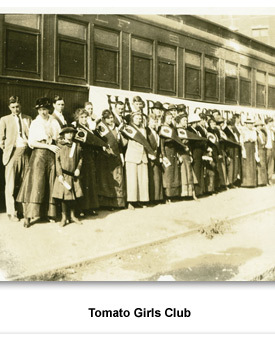
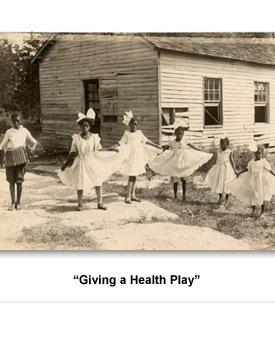

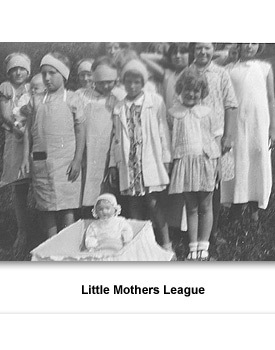
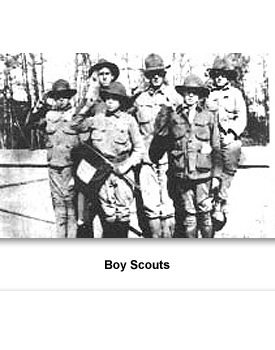
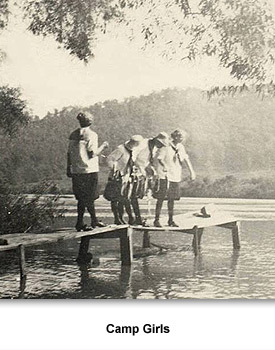
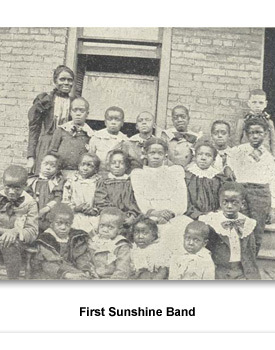
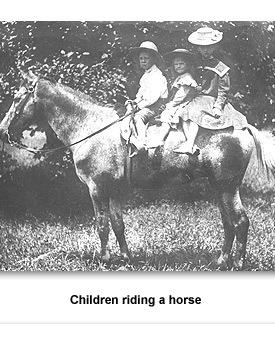
 Sponsored by: National Endowment for the Humanities
Sponsored by: National Endowment for the Humanities